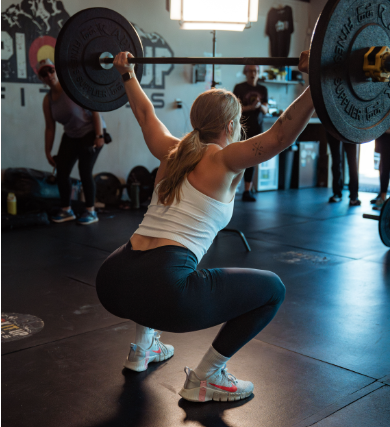**Master the Perfect Squat: A Comprehensive Guide to Form and Building Workout Confidence**
Squats are a fundamental exercise that can help build strength, improve mobility, and enhance overall fitness. However, mastering the squat requires more than just putting in the effort; it demands proper technique and a solid foundation of workout confidence. Whether you’re new to squatting or looking to perfect your form, this guide will walk you through the essentials of a functional squat and offer tips to build your workout confidence along the way.
### **The Blueprint of a Perfect Squat**
**1. Find Your Stance**
The perfect squat starts with the right stance. Place your feet shoulder-width apart or slightly wider, with toes pointing out at a 10-15 degree angle. This stance allows for optimal balance and range of motion. Experiment to find what feels most comfortable and effective for you.
**2. Position Your Feet**
Ensure that your feet are firmly planted on the ground, with weight distributed evenly across the entire foot, including your heels. This will help maintain stability and proper form throughout the movement.
**3. Perfect Your Movement**
- **Descent**: Initiate the squat by pushing your hips back and bending your knees. Keep your chest up and your back straight, focusing on moving your hips backward rather than downward.
- **Depth**: Aim to lower yourself until your thighs are at least parallel to the ground. If you have the flexibility and mobility, going deeper is beneficial, but avoid compromising form for depth. Your knees should not extend past your toes.
**4. Maintain Knee Tracking**
Your knees should track in line with your toes throughout the squat. Prevent them from caving inward, which can lead to strain and potential injury.
**5. Engage Your Back and Core**
Maintain a neutral spine with a natural curve in your lower back. Engaging your core is crucial to support your spine and prevent excessive rounding or arching. This engagement helps stabilize your torso and enhances overall squat performance.
**6. Keep Your Head in Check**
Keep your head in a neutral position, looking straight ahead or slightly upward. Avoid tilting your head forward or backward, as this can disrupt your balance and alignment.
**7. Ascent with Precision**
As you rise, push through your heels and extend your hips and knees fully at the top. Maintain a strong, upright torso throughout the ascent. Engage your core and avoid leaning forward.
**8. Master Your Breathing**
Inhale as you lower yourself into the squat and exhale as you push back up. Proper breathing supports your movement and helps maintain core stability.
### **Tips for Building Workout Confidence**
**1. Start Slow and Build Gradually**
If you’re new to squatting, start with bodyweight squats to master the form. Focus on getting the technique right before adding weights. Gradually increase the intensity and volume as you become more comfortable with the movement.
**2. Incorporate Proper Warm-Up**
A thorough warm-up prepares your muscles and joints for the workout ahead. Incorporate dynamic stretches and mobility exercises to improve flexibility and reduce the risk of injury.
**3. Embrace Consistency**
Consistency is key to building confidence. Incorporate squats into your regular workout routine and commit to practicing proper form with each session. Over time, you’ll build both strength and confidence.
**4. Listen to Your Body**
Pay attention to how your body responds during and after squats. If you experience pain or discomfort, it might indicate improper form or an underlying issue. Adjust your technique and consult a fitness professional if needed.
**5. Seek Feedback**
Don’t hesitate to ask for feedback from a coach, trainer, or experienced workout buddy. They can provide valuable insights into your form and offer tips for improvement.
**6. Track Your Progress**
Keep a workout journal to track your progress. Note improvements in your squat technique, strength, and confidence. Celebrating small victories can boost your motivation and reinforce your progress.
**7. Stay Positive and Patient**
Building confidence and perfecting your squat takes time. Stay positive and patient with yourself. Celebrate your progress and understand that perfection is a journey, not a destination.
### **Conclusion**
Mastering the perfect squat involves attention to detail and a commitment to proper form. By understanding the essentials of a functional squat and implementing strategies to build workout confidence, you’ll not only enhance your performance but also develop a positive, empowered approach to your fitness journey. Remember, consistency and patience are your best allies on this path to a stronger, more confident you.








